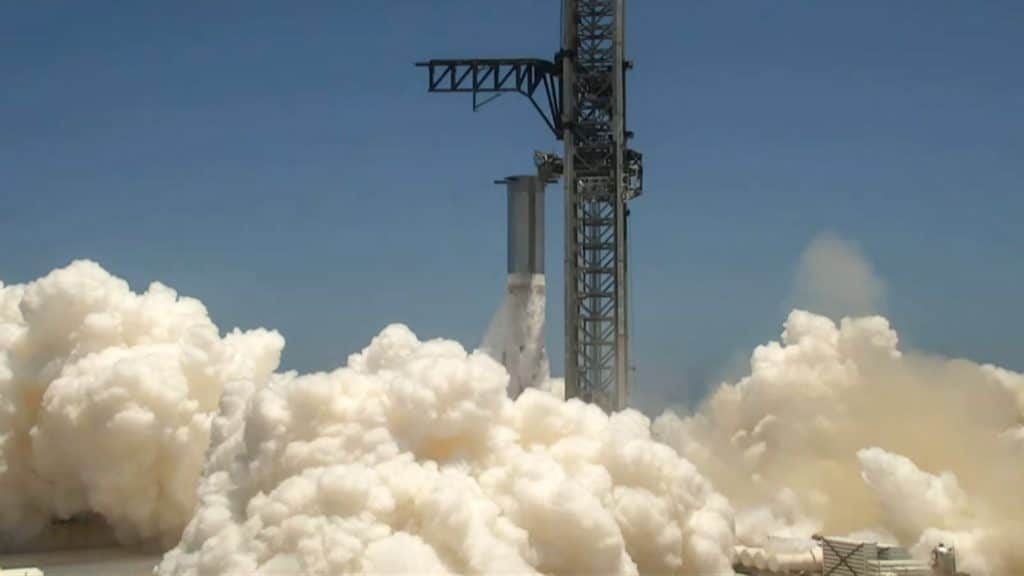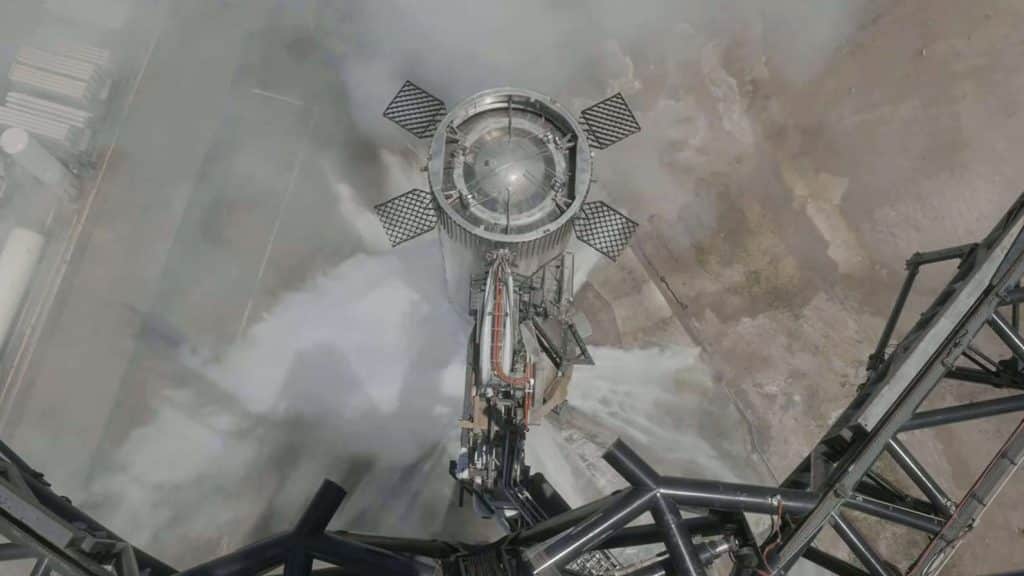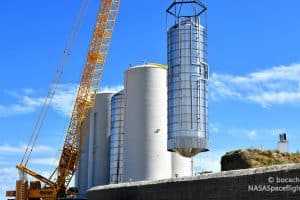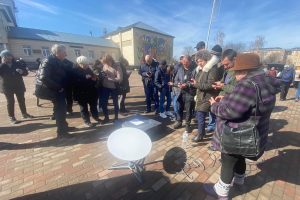Key Points
- 🔥 SpaceX conducted a static fire test of Booster 9, lighting all 33 engines for the first time since April’s Integrated Test Flight.
- 🚀 Fueling of the rocket encountered an issue during chilling of the lines, requiring repairs before proceeding.
- ⏱️ After repairs, the liquid oxygen and liquid methane tanks were filled, though methane was only partially filled.
- 💥 Booster 9 successfully ignited all 33 Raptor engines, but 4 engines shut down prematurely during the 2.74-second test.
- ☁️ The new water deluge system worked, creating a steam cloud instead of the usual dust cloud during the test.
- 🛠️ SpaceX will analyze data, replace underperforming Raptor engines, and plan another static fire test in the coming weeks.
After conducting two previous tests of the water deluge system and a spin prime test for Booster 9, SpaceX successfully ignited all 33 engines in its first firing since the Integrated Test Flight on April 20th.
SpaceX initiated the rocket fueling process early this morning, but a problem arose during the chilling of the lines connecting to the rocket. A red team was dispatched to the pad to carry out repairs. Once the repairs were finished, the red team left the site, and SpaceX resumed fueling its tank farm.

After chilling the fuel lines for a couple of hours, the process of filling the liquid oxygen and liquid methane tanks on Booster 9 commenced at T-Minus 67 minutes. While the liquid oxygen tank was fully filled, the liquid methane tank was only partially filled, falling short of the required amount for the test.
With a smooth countdown, Booster 9 successfully ignited all 33 Raptor engines. However, during the 2.74-second duration test, 4 engines shut down prematurely. The original plan was for the test to last 5 seconds.
The newly implemented water deluge system appeared to function as intended, albeit with a brief engine firing. Unlike the typical formation of a large dust cloud after a static fire test, this particular test produced a steam cloud that dissipated relatively quickly after the test.

SpaceX will now analyze the gathered data, possibly replace the Raptor engines that exhibited unexpected performance, and proceed with another round of static fire testing. This subsequent test is anticipated to take place in the coming weeks.





